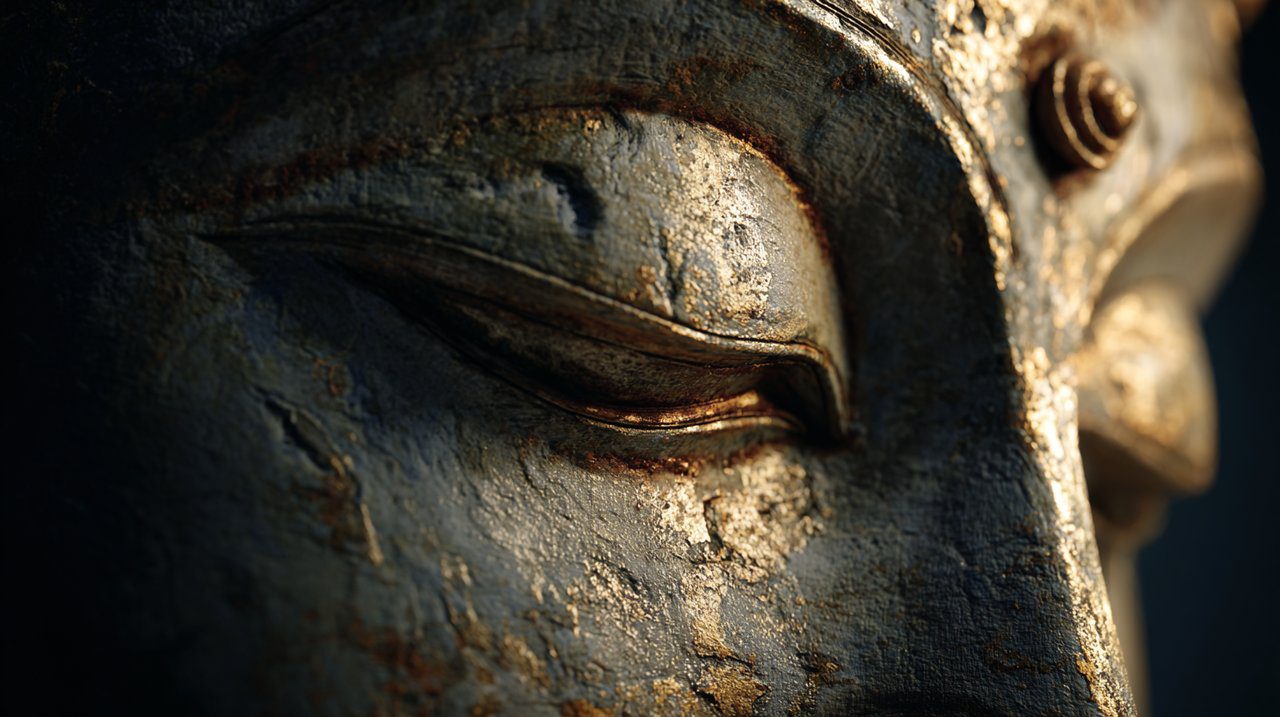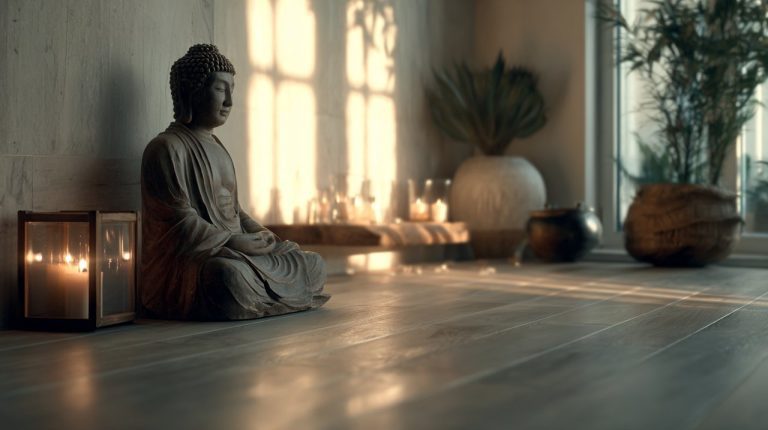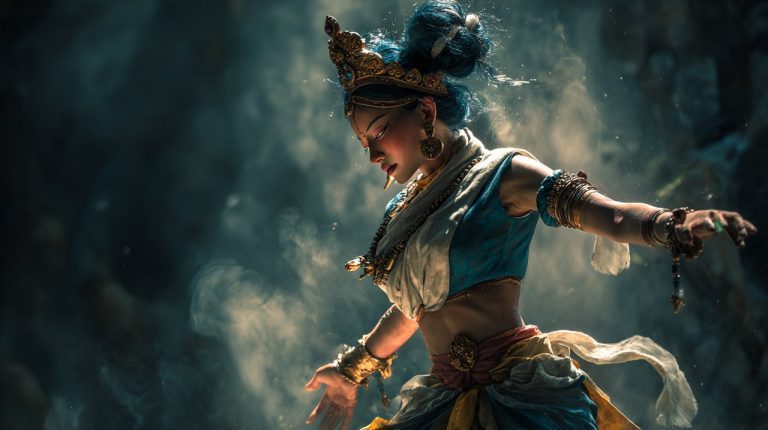The Buddha’s Third Eye: A Gateway to Awakened Consciousness
Consider a gaze that perceives beyond the ordinary, piercing through illusions to reveal deeper truths. The distinct mark on the Buddha’s forehead, often recognized as the ‘Third Eye,’ is precisely this invitation. It is not a physical organ, but a profound symbol of spiritual insight and heightened perception. This emblem guides us toward an inner vision, a way of seeing cultivated through patient inner work, ultimately offering a clearer understanding of existence.
It is a gentle reminder of the wisdom residing within each of us.

The Buddha’s Third Eye: A Symbol of Inner Vision
Symbolic Depictions
In the subtle language of spiritual art, the Third Eye manifests as a dot, an urna, or a luminous jewel upon the forehead. This precise placement signifies a focal point for profound awareness and intuitive wisdom, offering a perception that transcends ordinary senses. Across diverse cultures, this symbol frequently appears in narratives of deep vision and inner clarity. It serves as a potent reminder of our inherent capacity to discern truths beyond the immediately visible world.
Ushnisha and the Third Eye: Distinctions in Symbolism
The gentle curve of the Ushnisha, a prominent form atop the Buddha’s head, is often mistaken for the Third Eye. However, these two symbols represent distinct expressions of insight. The Ushnisha symbolizes an immense accumulation of wisdom, a physical manifestation of profound spiritual attainment, akin to a serene mountain peak of understanding. Conversely, the Third Eye, frequently depicted as an urna or a tuft of hair between the eyebrows, signifies a different kind of perception. While both forms allude to deep spiritual unfolding, the Third Eye specifically denotes inner vision and intuition—a subtle gateway to expanded awareness and an internal awakening. Understanding this distinction clarifies their unique roles in Buddhist iconography.
Cultivating Inner Vision: A Path to Clarity
Awakening Intuition: Cultivating Your Inner Eye
The symbolic Third Eye represents a wellspring from which intuition flows effortlessly. It embodies an innate knowing, a subtle current that guides us beyond the confines of logical maps. This inner compass adeptly navigates the intricate currents of life.
Cultivating this inner vision involves a profound return to the authentic self, fostering a connection with a universal stream of wisdom. This journey transcends the analytical mind, allowing insights to emerge with the quiet certainty of dawn. For many, this means integrating moments of mindful reflection into daily routines, transforming everyday experiences into opportunities for deeper understanding.
The ‘Third Eye Chakra’ and Its Spiritual Role
Within the esoteric frameworks of various spiritual traditions, the ‘Third Eye Chakra,’ or Ajna chakra, holds a pivotal position. Located between the eyebrows, it functions as a subtle yet potent source of intuition, imagination, and spiritual perception. When this energetic center achieves balance, a profound mental clarity unfolds, intuition sharpens, and a deeper connection to universal awareness takes root. This balance is crucial, often distinguishing genuine insight from mere fantasy, making it a significant point in the unfolding journey of spiritual growth.

Practices for Inner Clarity: Nurturing Awareness
Meditation and Mindfulness for Sharpening Inner Sight
Engaging with the Third Eye is not about seeking a physical alteration, but rather about refining one’s inner gaze. Meditation Practices serve as a dedicated cultivation, akin to tending a fertile garden for inner awareness. A consistent, gentle focus upon the space between the eyebrows can gradually awaken this energetic center.
Mindfulness, the serene observation of thoughts and sensations, effectively stills the turbulent currents of the outer world, creating space for subtle inner signals to emerge. Through diligent and consistent practice, the connection to intuition deepens, much like a skilled sculptor patiently revealing form from raw stone.
The Path of ‘Spiritual Growth’ and ‘Kundalini Awakening’
The journey to engage the Third Eye forms a crucial facet of Spiritual Growth. It demands an intentional inward turning, a profound understanding of self, and an unwavering commitment to personal transformation. This path frequently intertwines with the ancient wisdom of Kundalini Awakening, a concept often misunderstood. Kundalini is envisioned as a coiled serpent of dormant spiritual energy, residing at the base of the spine. When awakened, it commences a slow, deliberate ascent through the body’s energy centers, much like a life force reaching towards enlightenment. This profound unfolding can catalyze expanded awareness, not merely as a sensation, but as a fundamental shift in perception. As this vital energy rises, it can dramatically deepen the resonance of the Ajna chakra, sharpening inner sight with the piercing clarity of a mountain vista. This awakening represents a transformative inner shift, guiding individuals to perceive the world through an entirely new lens, revealing subtle energies previously unseen.
The Universal Eye: Ancient Echoes of Inner Wisdom
Shared Insights Across Ancient Traditions
While deeply personal, the pursuit of inner vision is far from a solitary endeavor. Its origins extend back through millennia, echoing across the ancient wisdom traditions of the world. The concept of an inner eye, a spiritual gaze, is by no means exclusive to the Buddhist path. Ancient Egyptian art, for example, prominently features the Eye of Horus—a symbol not merely of protection and vitality, but also of profound knowledge and penetrating insight. Similarly, numerous Hindu deities are depicted with a third eye, signifying their omniscience and ability to perceive beyond the veil of ordinary reality. Indigenous cultures globally also articulate notions of a ‘second sight’ or an ‘inner knowing.’ These shared understandings, spanning diverse eras and geographies, underscore humanity’s universal yearning for truths residing beneath the surface—a relentless quest for understanding that transcends immediate appearances.
Modern Interpretations and ‘Healing Crystals’
Even in our contemporary world, the Third Eye endures as a significant symbol, serving as a focal point for developing psychic abilities, lucid dreaming, and heightened creativity. Modern seekers, much like ancient mystics, navigate diverse practices and supportive elements to nurture this inner unfolding, often drawing guidance from timeless archetypes that illuminate the path of inner knowing. Among these supportive elements are healing crystals, frequently selected to assist in the delicate process of opening and balancing the Third Eye. Stones such as amethyst, lapis lazuli, and sodalite are regarded as natural companions for this work. In traditional practices, these crystals are carefully placed upon the Ajna chakra during meditation, believed to help align its energy, offering a subtle aid to calm contemplation and the unfolding of intuition. The true value of such stones, beyond their aesthetic appeal, lies in their perceived energetic resonance that supports profound inner work, acting as a tangible anchor in an often abstract journey, and for those seeking direct guidance, a deeper exploration of specific tibetan mala necklace[/kw], serving as a tangible guide along one’s path and a constant reminder of inner commitment, a concept further explored in the purposeful use of [websager type=”post” id=”200308″ post-title=”Wooden Prayer Beads: The Meaning, Benefits, and How to Wear Them with Intention” relation-type=”tag_related” generated=”1″> .
💡 Preguntas Frecuentes
The Buddha's Third Eye, often depicted as a dot, urna, or jewel between the eyebrows, symbolizes spiritual insight, awakened higher consciousness, and an inner vision accessible through inner work. It represents the ability to perceive deeper truths beyond ordinary senses and is linked to divine vision and enlightenment.
The Ushnisha is the bump on top of the Buddha's head, symbolizing his accumulated wisdom and spiritual achievement. The Third Eye, or urna, is located between the eyebrows and specifically represents inner vision, intuition, and higher perception.
The Third Eye Chakra, also known as Ajna, is the sixth energy center located between the eyebrows. It's considered the hub of intuition, imagination, and spiritual perception. When balanced, it brings mental clarity, strong intuition, and a connection to higher consciousness, playing a vital role in spiritual growth and awakening.
Activating the Third Eye involves sharpening inner awareness through practices like meditation, focusing attention on the space between the eyebrows, and mindfulness (observing thoughts without judgment). These practices help quiet external noise and attune to subtle inner signals, deepening intuition.
In contemporary spirituality, healing crystals such as Amethyst, Lapis Lazuli, and Sodalite are believed to resonate with the Ajna chakra (Third Eye). They are used to support the opening of the Third Eye, aid in meditation, and foster the development of intuition.








